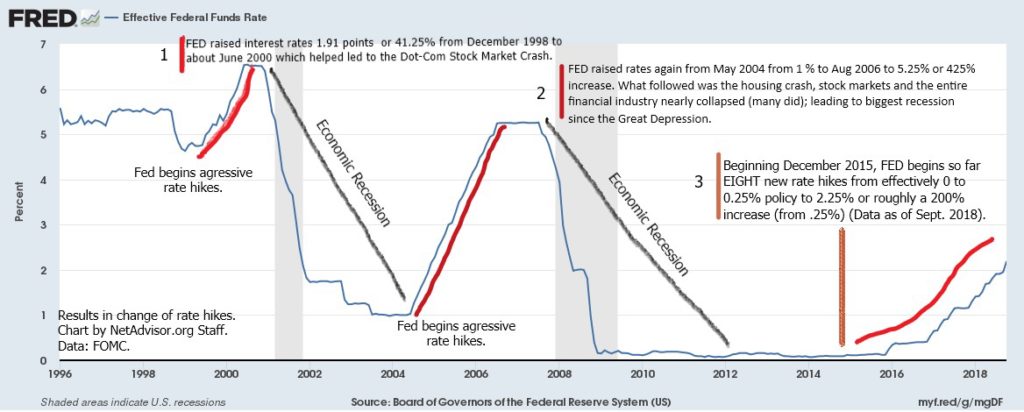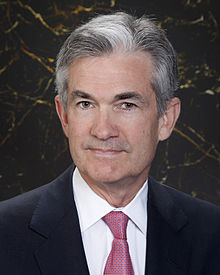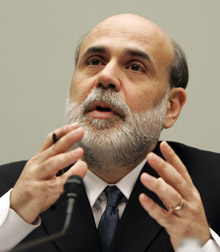This topic focuses on issues relating to Monetary Policy (The FED) and U.S. Federal Reserve Banks.

Why This is Important:
The Fed Fund Rates (FFR) is the rate charged by the Federal Reserve for overnight loans. The FFR is directly tied to bank interest rates. As the FFR changes, so do the interest rate costs to consumers. Thus, a change of interest rates impact the thew borrowing costs of home mortgages, vehicle loans, credit card rates, business loans, and anything tied to business or consumer interest rates. Thus interest rates are critical to watch during any economic cycle (chart above).

The Oct. 30, 2018 report below discuses power shift in the 2018 mid-term elections. We talk about part of this risk is interest rate risk which is directly accountable to the FED, who has been raising the Fed Fund Rates.
2018
2018-10-30 Stock Market Concern About Power Shift Risk in 2018 Midterm Elections
Janet Yellen was the FED Chair from February 3, 2014 to February 3, 2018. She replaced outgoing FED Chair Ben Bernanke (2006-2014).

Archived Reports Under Yellen
2014
2014-07-22 Buckle up – The Economy Might Be a ‘Yellen’

Archived Reports Under Bernanke.
2012
2012.12.12 The U.S. FED Printing $85 Billion Per Month of “Stimulus”
2012.01.10 Analysis: Fed Sends Nearly $77 Billion to the Treasury?
2011
2011.02.02 The FED’s Shell Game? Profitable or Insolvent?
2010
2010.11.04 Uncle Ben, Inflation is Already Here
2009
2009.12.15 Who Do You Believe? Today’s Mixed Headlines
2009.11.04 Fed Leaves Rates Unchanged. Utopia Trade Continues With Caution
2009.08.13 Why Higher Rates is a Bad Move for the FED and the Economy Right Now
original content copyright © NetAdvisor.org® All Rights Reserved.
NetAdvisor.org® is a non-profit organization providing public education and analysis primarily on the U.S. financial markets, personal finance and analysis with a transparent look into U.S. public policy. We also perform and report on financial investigations to help protect the public interest. Read More.

